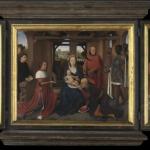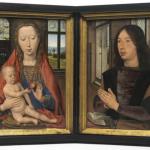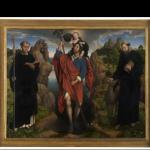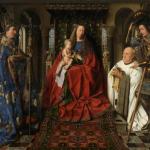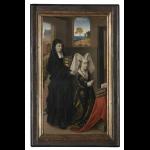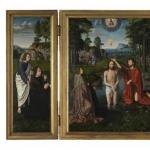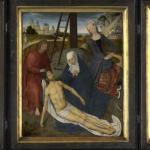This archived website 'Flemish primitives' is temporarily not being updated. Certain functionality (e.g. specific searches in the collection) may no longer be available. News updates about the Flemish primitives will appear on vlaamsekunstcollectie.be. Questions about this website? Please contact us at info@vlaamsekunstcollectie.be.
USE AND DEVELOPMENT: Social stratification

The Ghent Altarpiece by the brothers van Eyck (Sint-Baafs Cathedral, Ghent) were ordered by Jodocus Vijd, a rich citizen from Ghent. A few decades prior, a similar project was the privilege of the nobility and the high clergy. In the 15th Century the panels of the Flemish Primitives also became a status symbol for the wealthy middle class. In altarpieces for private chapels and churches the donors had themselves depicted along with the Virgin Mary and the saints. They got an increasingly more prominent place in the works of art, even in the midst of the religious events. The donors did not so much have the intention to show the viewer his religious duty. They displayed their religiosity for the guarantee of their own salvation. The panels of the Flemish Primitives also direct the churchgoer to the high position that the donor took on in society. The altarpieces mirrored the social and religious ambitions of the elite.
Mieke Parez

